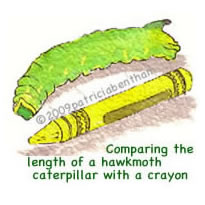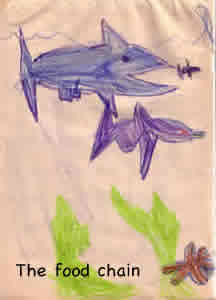Various educational curriculums use the acronym, CARE, standing for complexity, aesthetics, responsibility, and ethics when teaching environmental education activities.
Helping children understand that there are many ways that they can participate in making the earth a healthier place to live, by planting a tree seedling, for instance, can have long term consequences.
Below find a brief description of each topic in the CARE acronym and a section on how to integrate environmental education skills lists into different subjects.
Scroll to the bottom for a student activity based on the book “Ten Things I Can Do to Help My World” by Melanie Walsh.
Complexity
- There are natural and human systems that are all connected.
- As teachers and students, how do we interact with and affect those systems?
Aesthetics
- Help your students develop an appreciation for the natural world that will encourage them to learn about and protect the environment.
Responsibility
- Provide opportunities for your students to take responsible actions and explore the environmental impact of what they do.
Ethics
- As your students participate in environmental education activities, they develop an understanding of environmental issues and form an environmental ethic of their own.
Environmental Education Skills Lists
Environmental education activities can be integrated into all subject areas. Listed below are suggested learning outcomes for young students.
Science
Students are working towards…
- sharing ways to rethink, reduce, reuse, and recycle
- describing features of local plants and animals
- comparing local plants & animals
- describing attributes of their immediate environment (playground)
Social Studies
- showing an awareness of the concept of change
- identifying groups and places that are part of their lives
- identifying characteristics of different local environments
- showing responsible behavior in caring for their immediate environment
Language Arts & Math
- integrate the above with classifying, comparing, counting, and graphing activities
- make booklets, charts or class books (see activity at bottom of page)
Health & Career Planning
Students are working towards…
- identifying opportunities to make choices
- identify practices that contribute to health, including healthy eating, regular physical activity, emotional health practices, and disease prevention practices
Physical Education
Students are working towards…
- using the outdoors as not only as a place to get physical exercise, but to learn about how to care for the environment
- participating daily (e.g., five times a week) in moderate to vigorous physical activities
- identifying physical activities they enjoy doing
Drama & Music & Visual Arts
Students are working towards…
- expressing ideas or concerns about an environmental issue with drama, and songs
- showing their knowledge of and responding to environmental issues with 2-D and 3-D images
Student Book Activity:
“Ten Things I Can Do to Help My World” by Melanie Walsh is a great book to introduce kindergarten students to environmental education activities.
After participating in a unit on environmental education, have students make a class book based on Walsh’s book to display their new knowledge.
- Change the title to fit your class size. E.G. “18 Things We Can Do to Change Our World”
- Focus the children’s attention on their immediate environment, the school, their homes and nearby parks
- Have each child illustrate a page on thin card or thick paper
- Start each page with the words, “I can…”
- Have the student draw a picture with a dark felt, then color in with lighter coloured crayon to avoid covering up the words
- Help students sound out their sentence
- Put a hole through each page and insert a metal ring to hold it together
- Have fun reading your new book!


